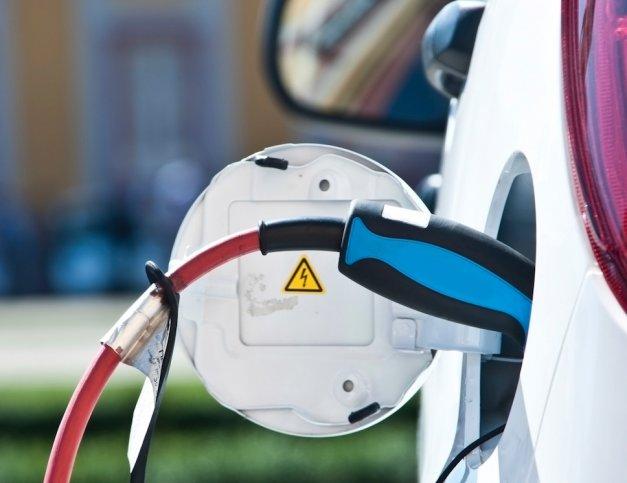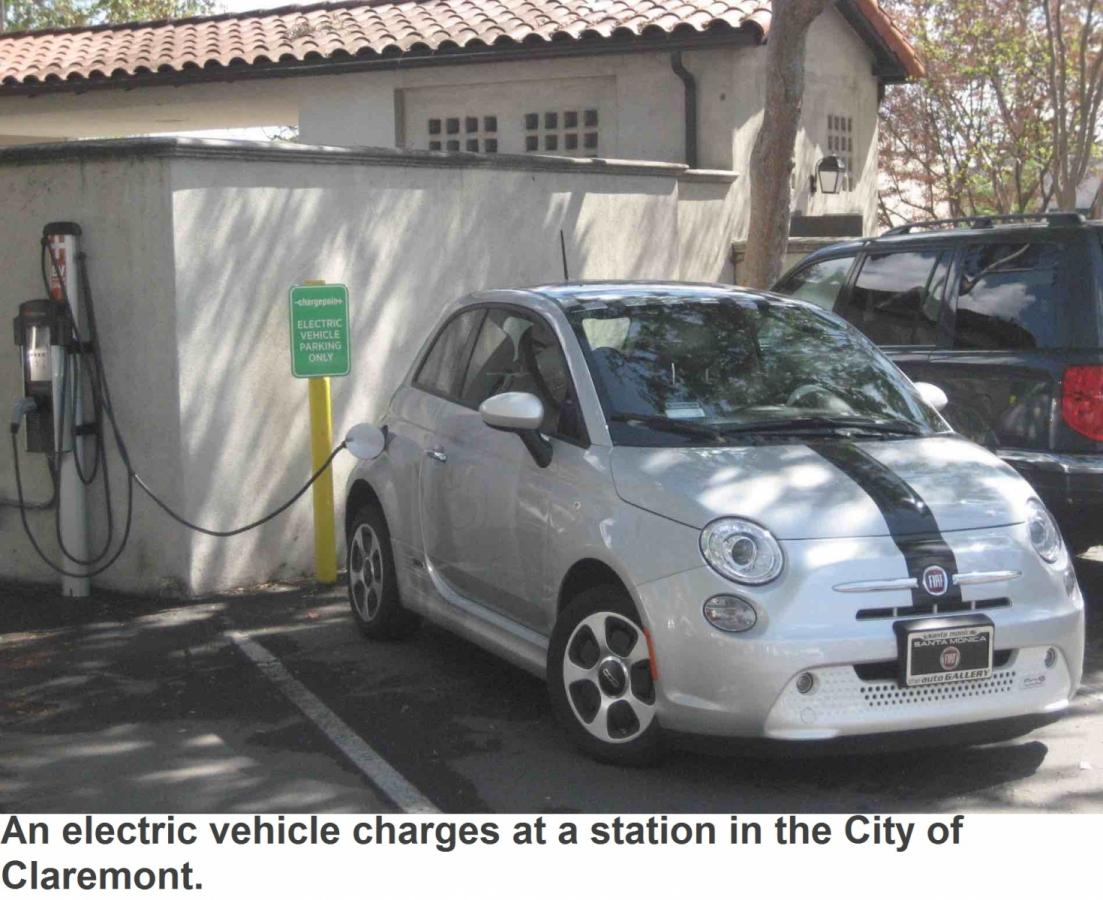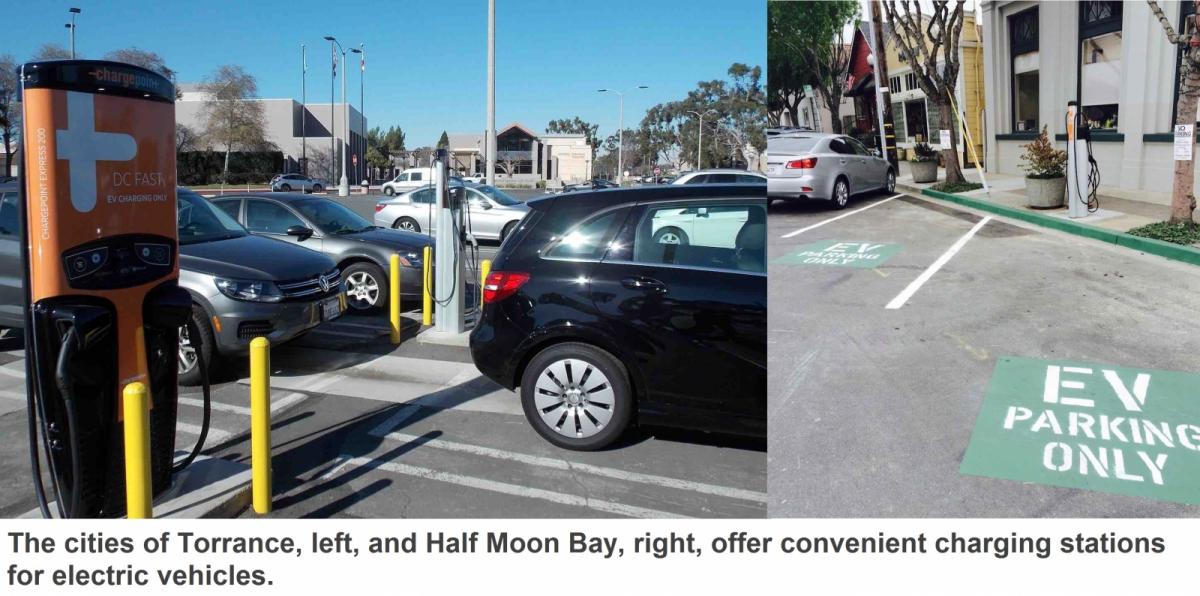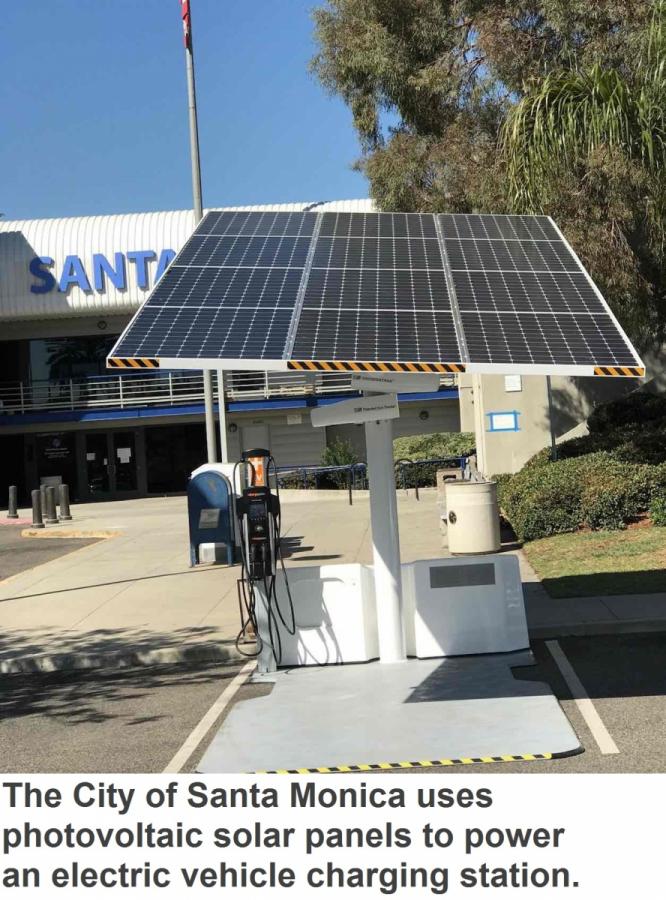Challenges of Electric Vehicle Infrastructure
Karalee Browne is sustainability program manager for the Institute for Local Government and can be reached at kbrowne@ca-ilg.org.
An increasing number of electric vehicles (EVs) are traveling California roads, pushing the state closer to achieving Governor Brown’s goal of 1.5 million electric cars on the road by 2025. However, the infrastructure to support these vehicles is arriving at a much slower pace. Although the California Energy Commission has awarded more than $25 million in grants to expand the growth of the state’s EV charging network, the state is still exploring the best path forward to support a market transition to EVs and create the infrastructure needed to support them.
In 2017, the Legislature addressed EV infrastructure through several bills. AB 1452 (Muratsuchi, Chapter 635, Statutes of 2017) authorizes exclusive EV charging and parking on public streets, along with AB 1083 (Burke, Chapter 638, Statutes of 2017), which now requires the California Public Utility Commission (CPUC) to review proposals to determine which state parks and beaches are suitable for EV charging stations. However, lawmakers dramatically rewrote AB 1184 (Ting), which would have authorized $3 billion in funding for EV incentives, instead calling for the California Air Resources Board to create a report “regarding the operation of the vehicle incentive programs.” The bill has been moved to the inactive file.
Meanwhile, all of the major investor-owned utilities (IOUs) have begun rolling out pilot programs approved by the CPUC to help increase the EV charging station infrastructure statewide. All three IOU programs focus on businesses and multifamily housing, with an emphasis on those in disadvantaged communities.
The City of Lynwood, one such community, worked with Southern California Edison to install six EV charge ports at its city complex to accommodate the city’s new EV fleet and another eight charge points in its civic center public parking lot for public use. “Being a disadvantaged community, the city wanted to bring charging infrastructure to its residents that may not have resources available to provide these stations on their own,” says Lynwood Mayor Maria Santillan-Beas.
Similarly, the City of Chula Vista is collaborating with San Diego Gas & Electric to install 123 chargers in three locations including City Hall, the public works yard and the police station. The process from concept to installation took a year, but Police Captain Vern Sallee says it was well worth the wait. “Investing in the infrastructure now allows us to accommodate our current employees’ needs, help the city reach its sustainability goals and prepare our operations for the future,” says Sallee.
“Infrastructure is everything,” says San Diego City Council President pro Tem and League First Vice President Mark Kersey. “Having the chargers available in locations where people need to use them is going to be key in the adoption of electric vehicles.” In 2017, the City of San Diego increased its EV ports from 32 to 68 and now has charging available at 15 popular landmarks throughout the city.
These utility-led programs seek to provide a cost-effective, turnkey approach to EV infrastructure installation that expands access and opportunity. Eighty percent of EV drivers charge at home, but those who live in apartments don’t have that option. In an effort to provide access to these people, Pacific Gas and Electric (PG&E) will install 7,500 Level 2 EV charging stations throughout its service territory over the next three years. PG&E is the only utility currently accepting applications for its first round of CPUC funding.
The Actual Cost and Who Pays
Prior to the utility pilot programs, many cities installed EV charging stations on their own and found that the total project cost can vary dramatically depending on the location and type of charger installed. In some cases, the cost of the actual charging station is the least expensive part of the project — about $1,500 to $3,000. Most cities funded stations using grants or rebates like those offered by regional air quality management districts, the California Energy Commission or the American Recovery and Reinvestment Act. However, many cities found that certain circumstances can significantly increase the project cost. For example, a typical Level 2 charger requires only a 240-volt connection, which is the most common power input connection to residential and small commercial buildings, but direct-current fast chargers require much more power access and can cost up to $300,000 per installation.
In some cases, cities found that installing an EV charging station involves Americans With Disabilities Act (ADA) compliance regulations, which can double the cost of the project. Maintenance has also been an issue for many cities because many did not account for that in the original contracts with the providers. Moorpark City Council Member David Pollock, who drives an EV, says his city got a surprise expense after installing four EV chargers. “We discovered that after a year of service, the vendors come back with an annual maintenance fee,” says Pollock. “One vendor tried to charge us $3,000 per year for two chargers.”
Half Moon Bay Public Works Director John Doughty says that cities should have a clear understanding of the total and ongoing costs of EV infrastructure and who is going to pay for it. The City of Half Moon Bay owns its EV charging stations and charges $1 per hour for the public to use them. Though the rate does not cover the city’s entire energy or operational costs, Doughty says the council set the rate as part of an effort to be good stewards of public funds, while ensuring that the community and its visitors have the amenities they need. “Our council sees this as a sustainability and an economic development opportunity,” says Doughty. “We want people to have the choice to purchase environmentally responsible cars and still know that they can visit our city and not have to worry about getting stranded.”
Like Half Moon Bay, the cities of San Mateo, Santa Barbara, Claremont and San Diego recoup costs by charging 25 cents, 35 cents, $1.25 and $1.75 per hour, respectively. However, some cities such as Simi Valley, Moorpark, Santa Cruz and Santa Monica do not charge patrons for EV charging in hopes of encouraging EV ownership. “Santa Monica is aggressively pursuing policies and programs that reduce carbon emissions,” says Mayor Ted Winterer. “This is why we’ve long supported electric vehicles and the charging infrastructure that makes them a realistic alternative.”
The City of Santa Monica recently approved an EV Action Plan (bit.ly/2CiV7tu) that addresses public and private infrastructure, public policy and community outreach. Garrett Wong, the city’s senior sustainability analyst, says cities often underestimate the time and effort that goes into planning and installing EV infrastructure. “EV charging touches many departments like few other projects do, from public works and legal to parking operators and the utility companies,” says Wong. “We have done a lot of research and learned a lot through our experience. We hope this plan can serve as a template for a more strategic approach that is needed to help speed up the process and implementation.”
Sacramento Selected to Be the First Green City
The City of Sacramento also has an Electric Vehicle Strategy. The city worked with Sacramento County, Sacramento Metropolitan Air Quality Management District, Sacramento Municipal Utility District and other stakeholder groups to build on the countywide EV Readiness Plan, which outlines forecasted demand for EV charging infrastructure and prioritizes locations throughout the Sacramento area.
In July 2017, Volkswagen’s subsidiary, Electrify America, chose the City of Sacramento to be its first Green City as part of a court-ordered settlement. The award will bring $44 million to Sacramento by 2020 to expand its EV infrastructure and increase access to zero-emission technologies in low-income communities in the coming years. “Electrify America’s Green City Initiative provides an unparalleled opportunity to electrify transportation and enhance the mobility options of all residents, particularly those who live in disadvantaged communities,“ says Mayor Darrell Steinberg. “It is ultimately about how to get more people where they need to go in a manner that reduces emissions and advances the technology, while creating jobs and economic opportunity in the process.”
Meanwhile, in May 2017, the Sacramento region launched the state’s first EV car-share program that placed eight shared EVs at public housing sites. Residents can now apply for on-demand access to the vehicles with no charge for maintenance, insurance or charging the battery. The program is funded through a $1.3 million grant from the California Air Resources Board using cap-and-trade funds.
The Road Ahead
As utility companies implement pilot programs and the state works on a comprehensive report, cities are preparing to take advantage of current funding opportunities to help transform their EV-related operations and their communities. Joseph Oldham, director of the San Joaquin Valley Clean Transportation Center, says cities can do several things immediately to make sure they are promoting EV ownership and the charging infrastructure. “Cities should take a look at all of their policies, streamline permitting processes and update building, parking and zoning codes,” Oldham says. “The market is changing rapidly, and cities need to be prepared to access opportunities quickly.” Oldham encourages cities to think beyond what is in front of them and plan for regional and statewide connectivity.
Electric Vehicle Charger Basics
A Level 1 charger is a basic 120-volt plug-in that charges at a slow rate, requiring many hours to recharge an electric vehicle’s battery. Most vehicles come with a basic Level 1 charger included.
A Level 2 charger is faster and the most common type of public charger on the market. It charges at 6.6 kilowatts (kW), which translates to 20 to 25 miles of range for an hour of charging.
Direct-current fast-chargers, sometimes called Level 3 chargers, can charge an electric vehicle to about 80 percent of its full charge in 30 minutes.
High-power chargers are recent additions to the market. These typically start at 150 kW, with some reaching 350 kW. High-power chargers are expected to recharge electric cars for a range of 200 to 300 miles after a 15-minute charge.
Related Resources
How to Apply for PG&E’s Level 2 EV Charger Funding Program: www.pge.com/en_US/residential/solar-and-vehicles/options/clean-vehicles/charging-stations/ev-charging-infrastructure-program.page
Additional resources and information to help local governments considering how to bring electric vehicle infrastructure into communities: www.ca-ilg.org/evinfrastructure
One Mile, One Charger
The City of Torrance’s One Mile, One Charger project aims to expand the publicly available electric vehicle charging infrastructure so that residents and visitors are never more than a mile from a charging station. In addition to EV charging stations installed in private developments, the city installed 20 city-owned, “networked” charging stations that are operated and maintained by a private company.
These charging stations collect and map data points such as the driver’s home zip code and the usage patterns. From this information, the city can calculate regional impacts to air quality and greenhouse gas emission reductions and even use the data to help determine future charging station sites.
Networked chargers have the ability to run financial transactions and provide reporting on data. The companies that sell these units also charge a monthly or annual network access fee. These fees typically run about $200 per charger annually, which is often more than the cost of the electricity running through the charger. Without network access, the chargers typically will not work. Because networked chargers cost approximately $1,500 to $3,000 in addition to the continuous network access fees, some cities opt to use “non-networked” chargers that are typically cheaper — about $500.
With non-networked chargers, the city can allow free charging or flat fee permits to access the chargers. The rationale for free or flat fee charging is that the electricity is cheaper than the network access fees, so the city can afford to “give away” the electricity. Cities doing so also justify it by creating an incentive for EVs to help meet environmental policy objectives.
In 2018, the state Department of Food and Agriculture will be increasing consumer protection standards related to “for fee” public charging. These requirements will be similar to how gasoline pumps are certified, so consumers can be sure that they are getting a of electricity when they are paying for a kilowatt hour. Cities considering purchasing “for fee” charging equipment will want to ensure equipment complies with the new Division of Measurement Standards regulations.
The One Mile, One Charger Map: (http://torranceca.maps.arcgis.com/apps/MapJournal/index.html?appid=685a898986854f498495c660337ea54b)
Photo credit: Courtesy of the City of Claremont (Fiat charging); Courtesy of the cities of Torrance and Half Moon Bay; Courtesy of the City of Santa Monica (solar panels).
This article appears in the February 2018 issue of
Western City
Did you like what you read here? Subscribe to Western City




